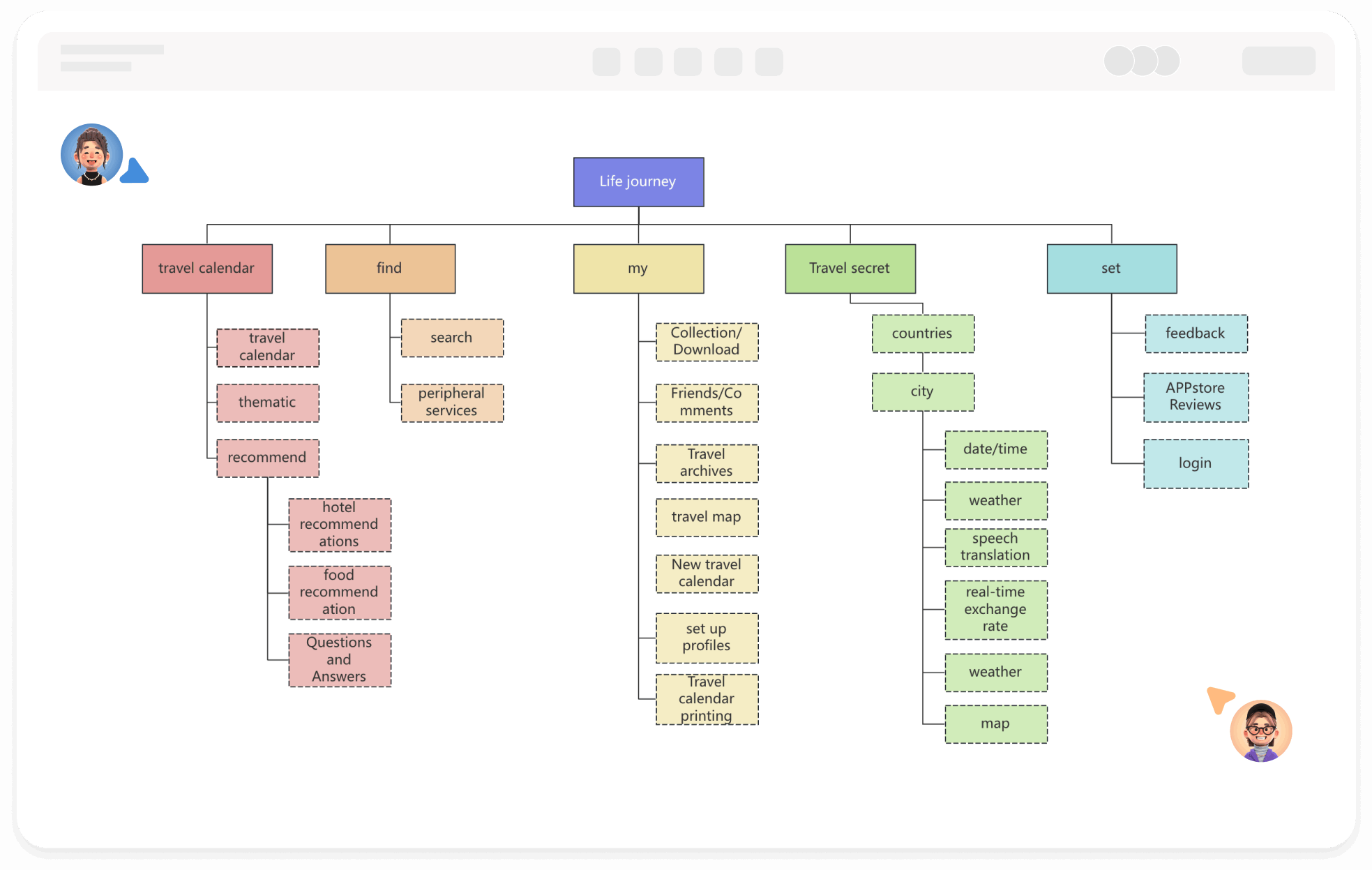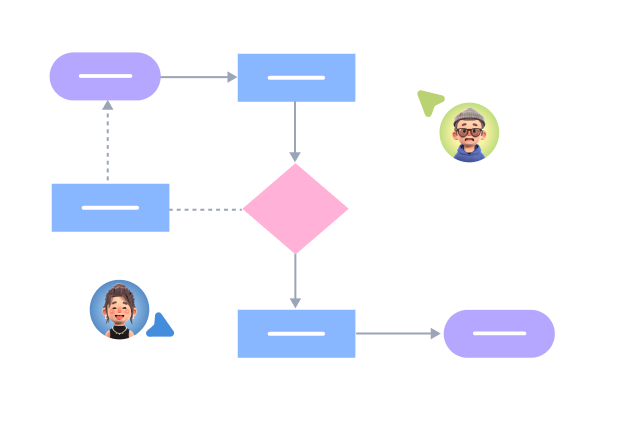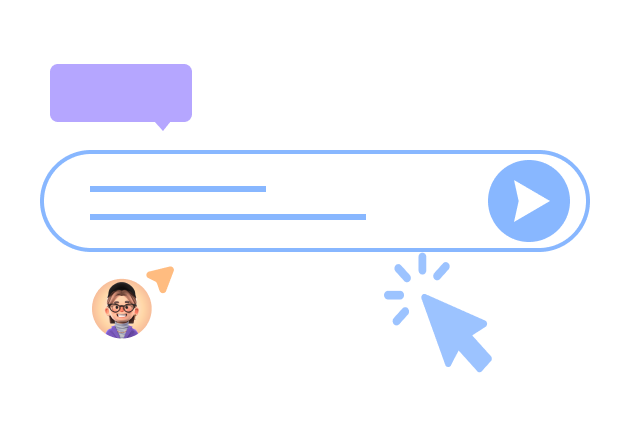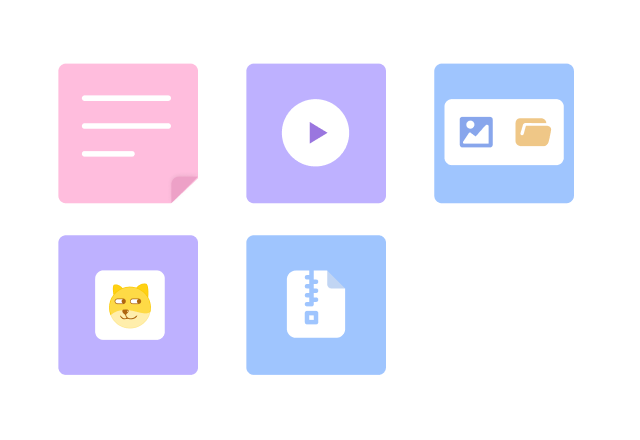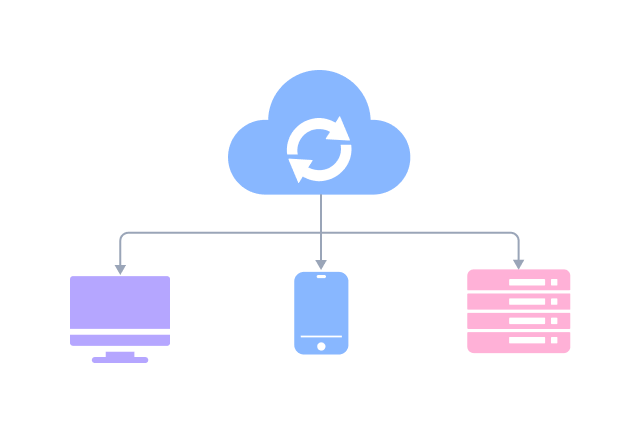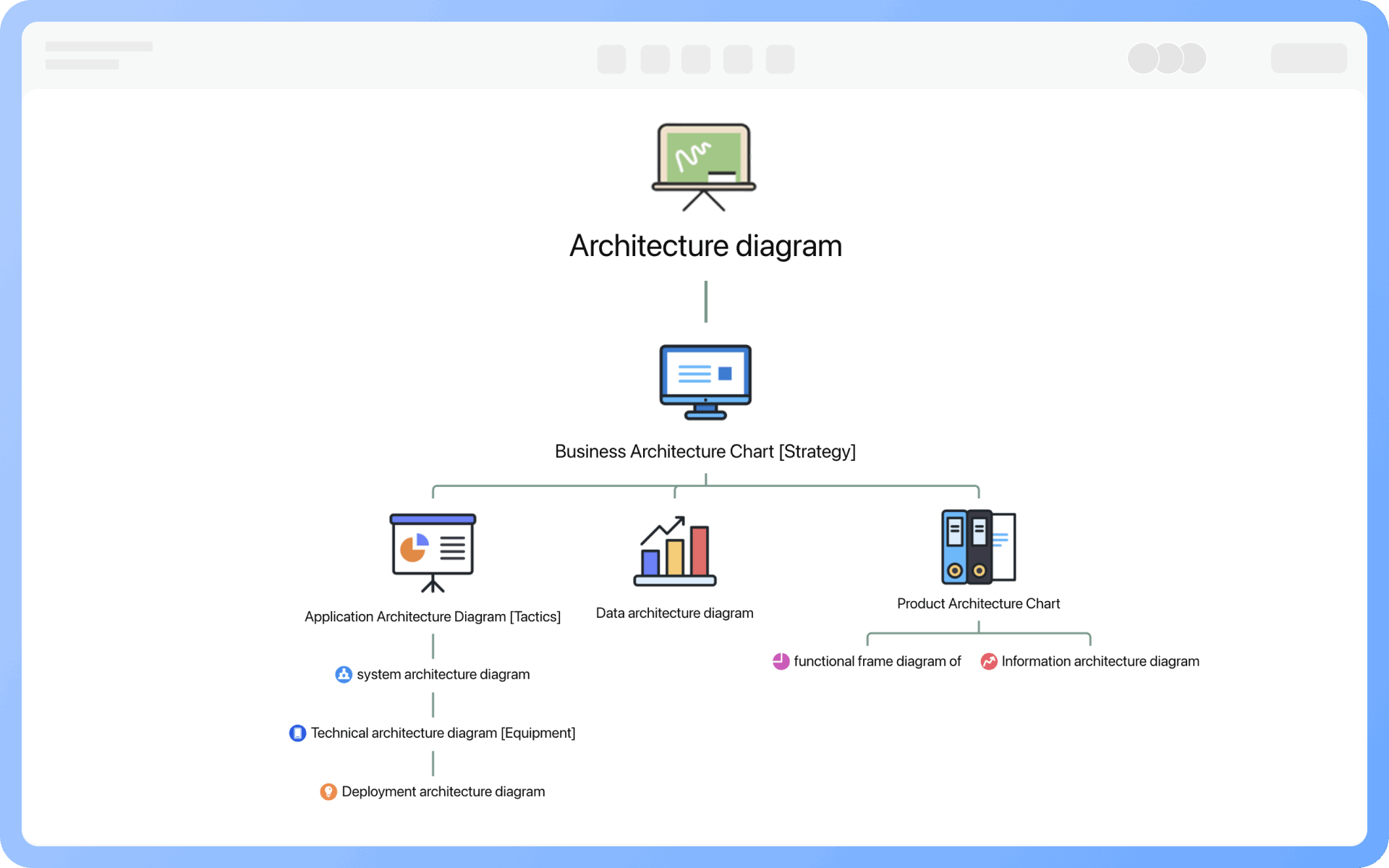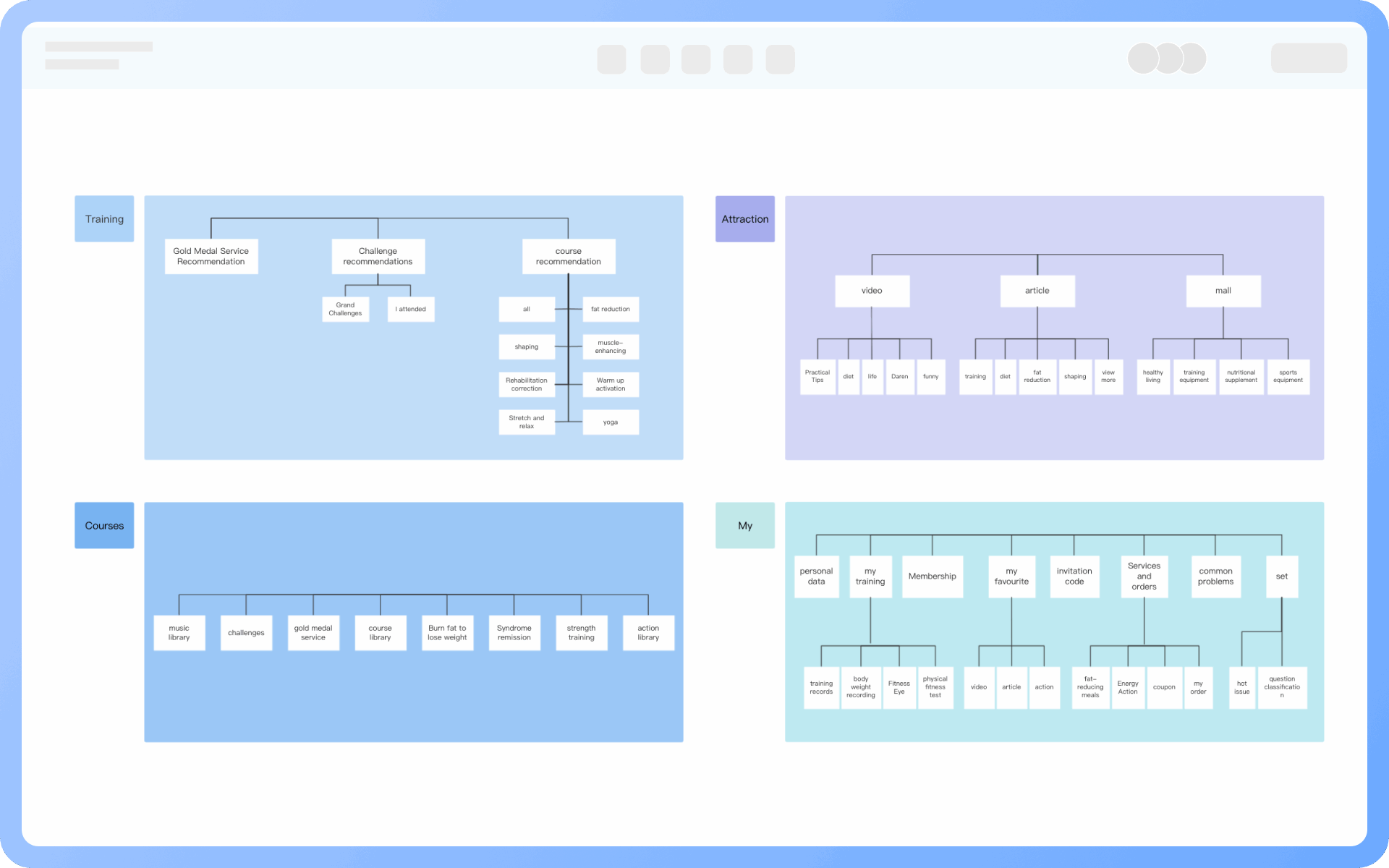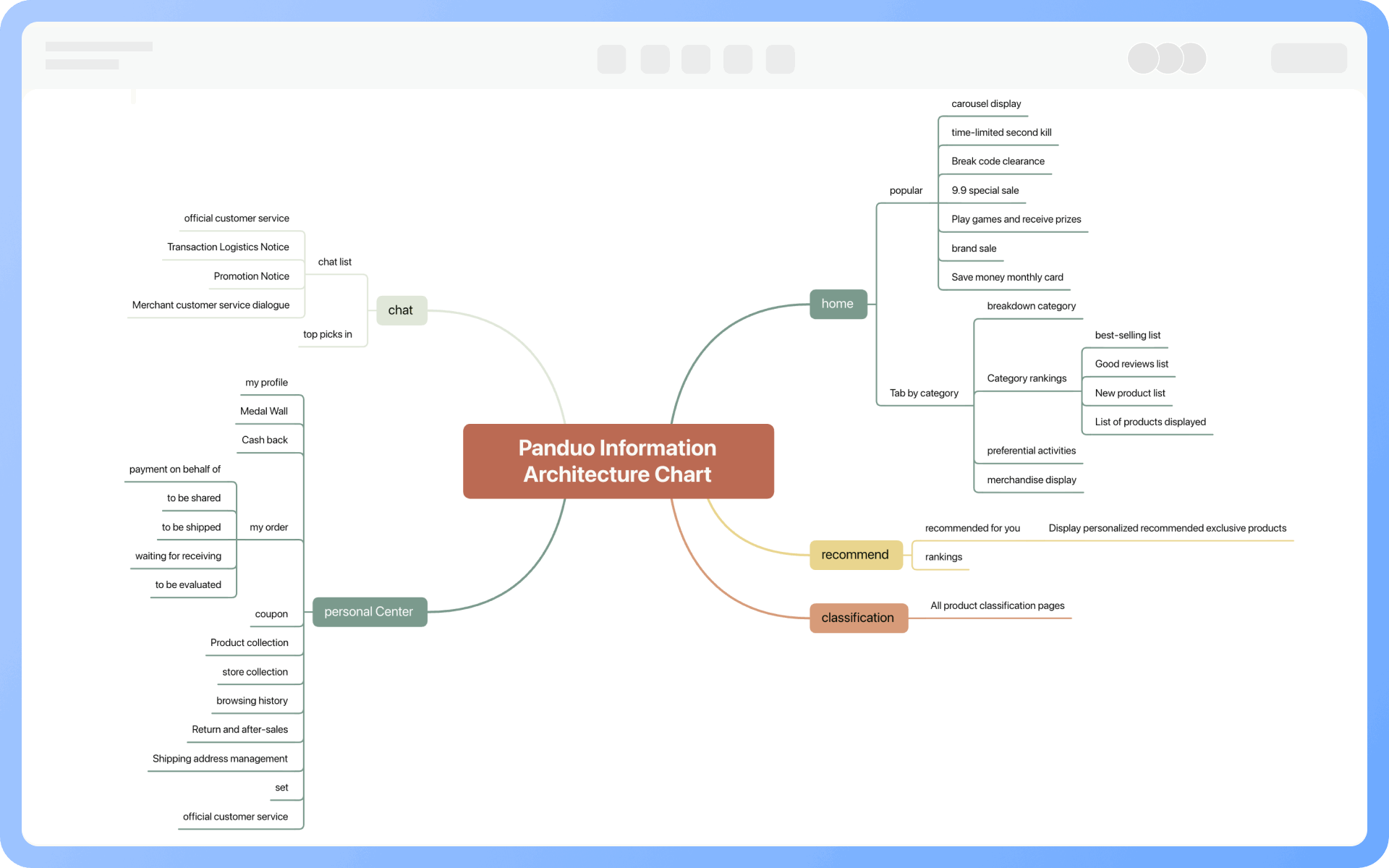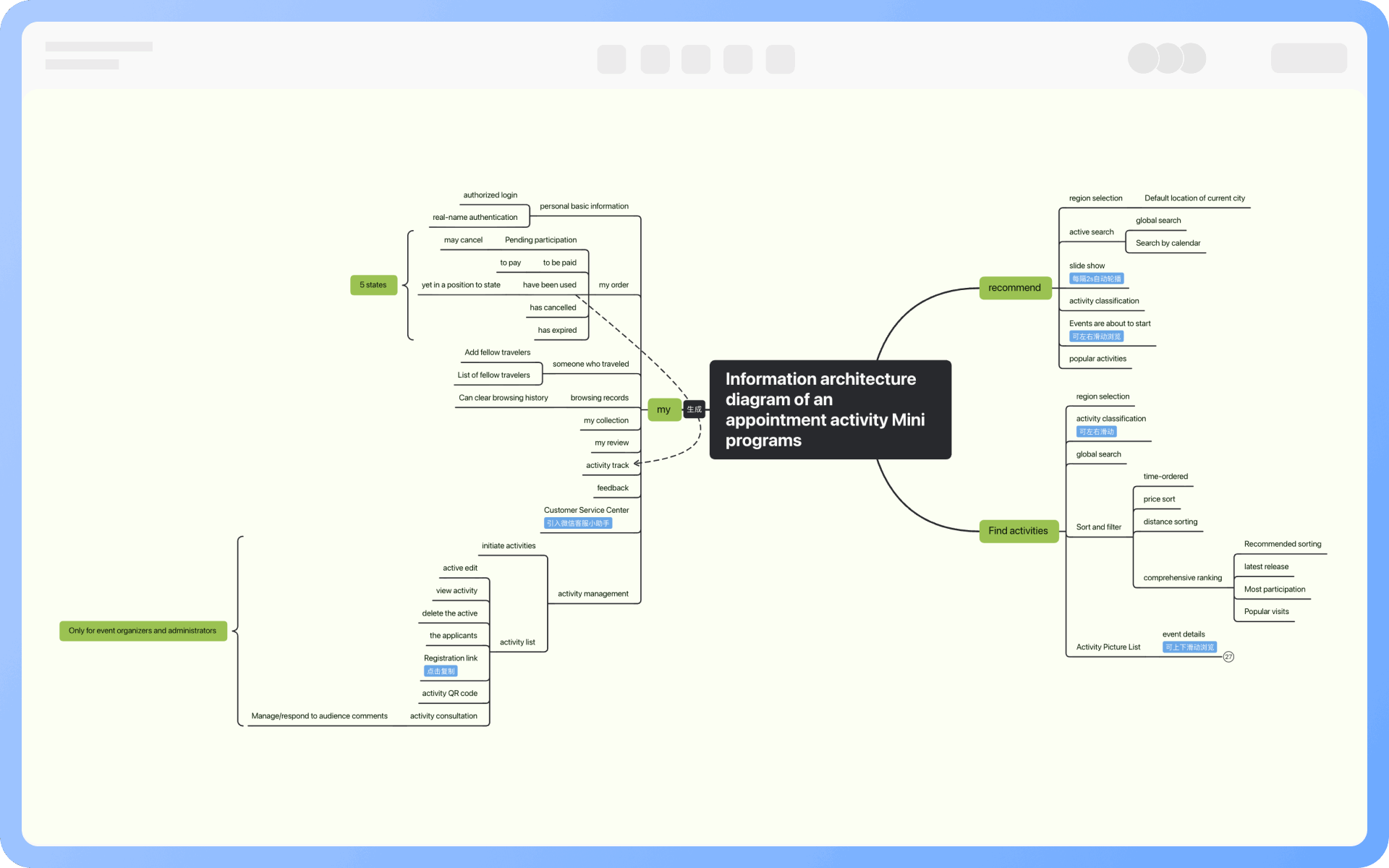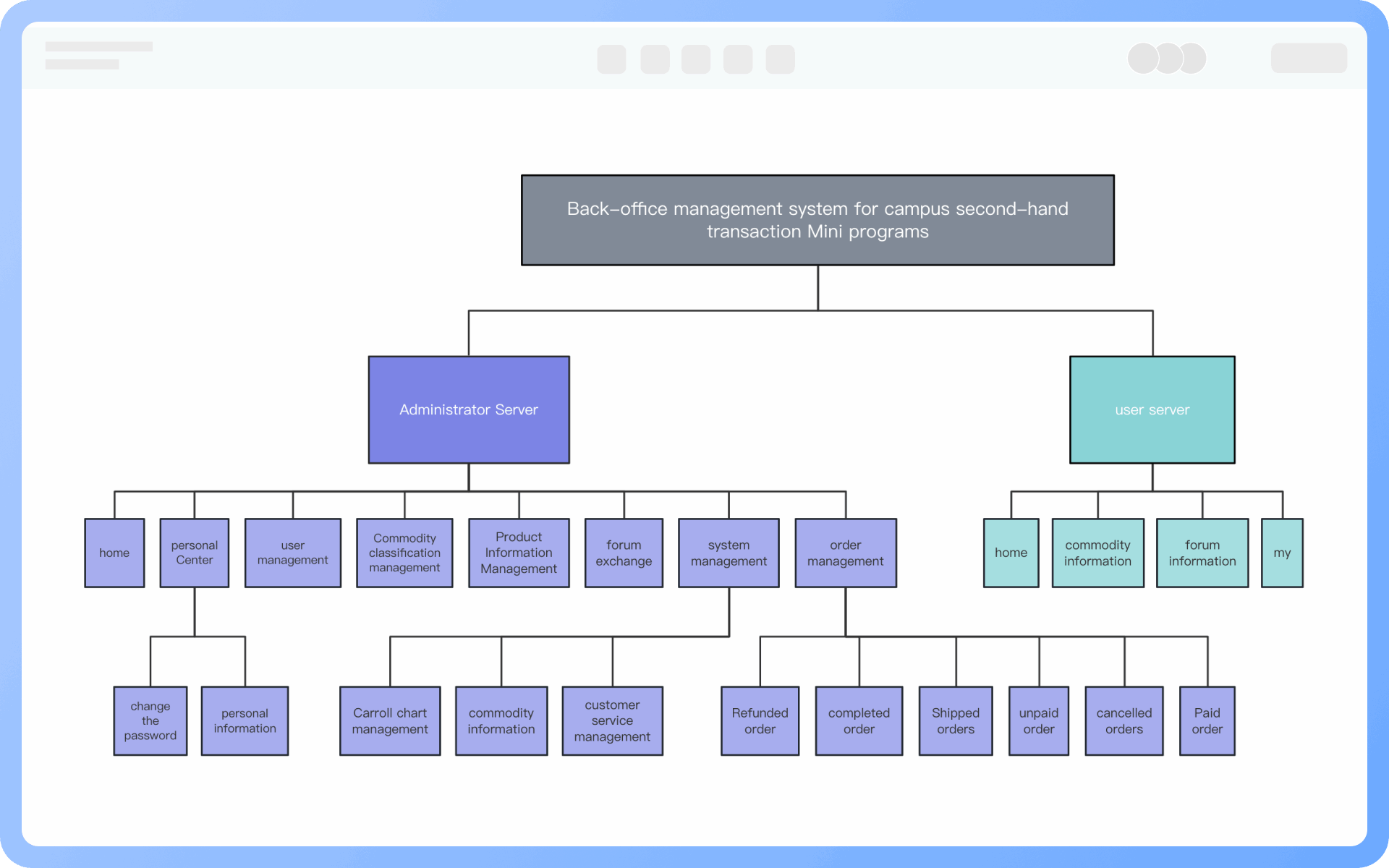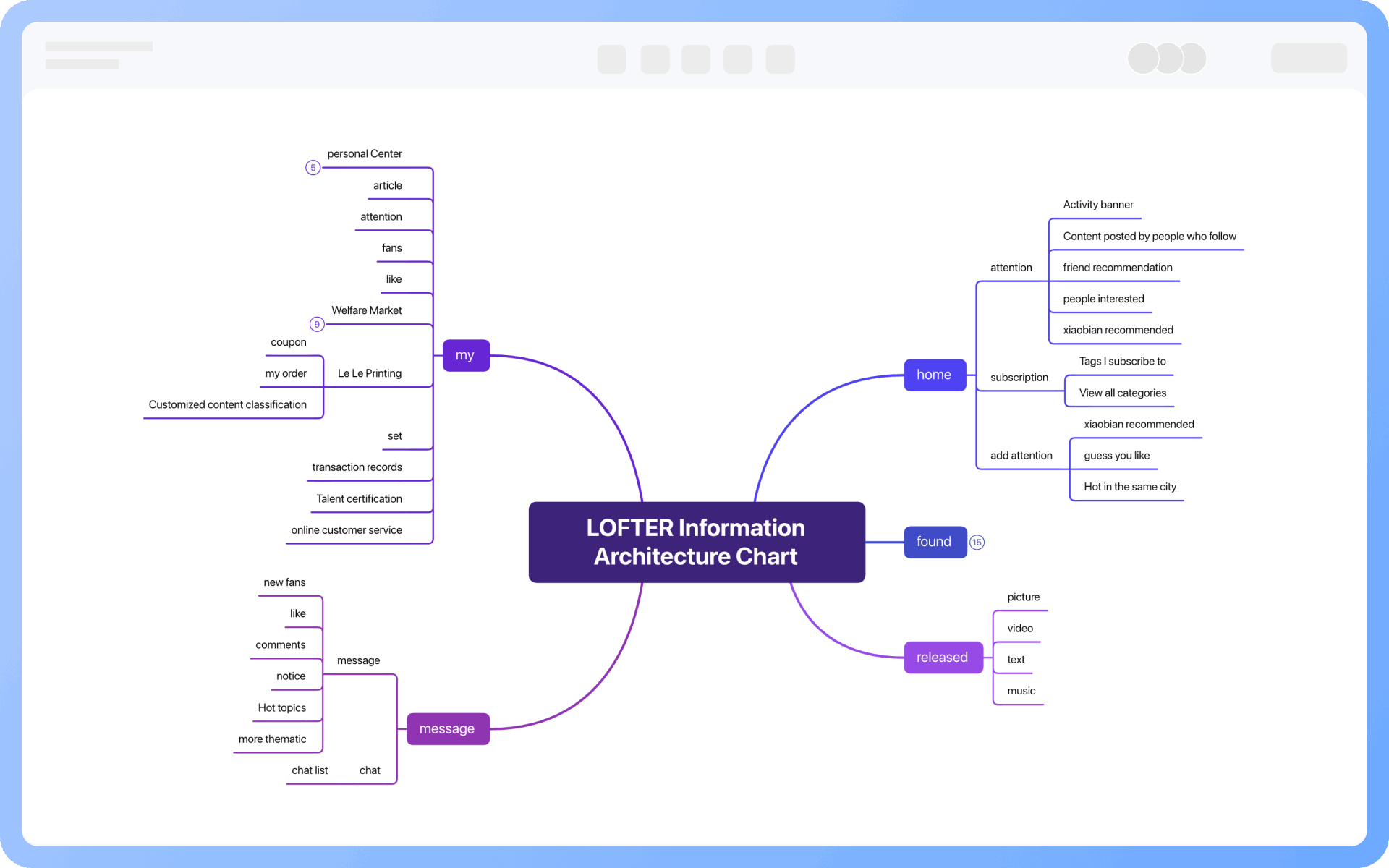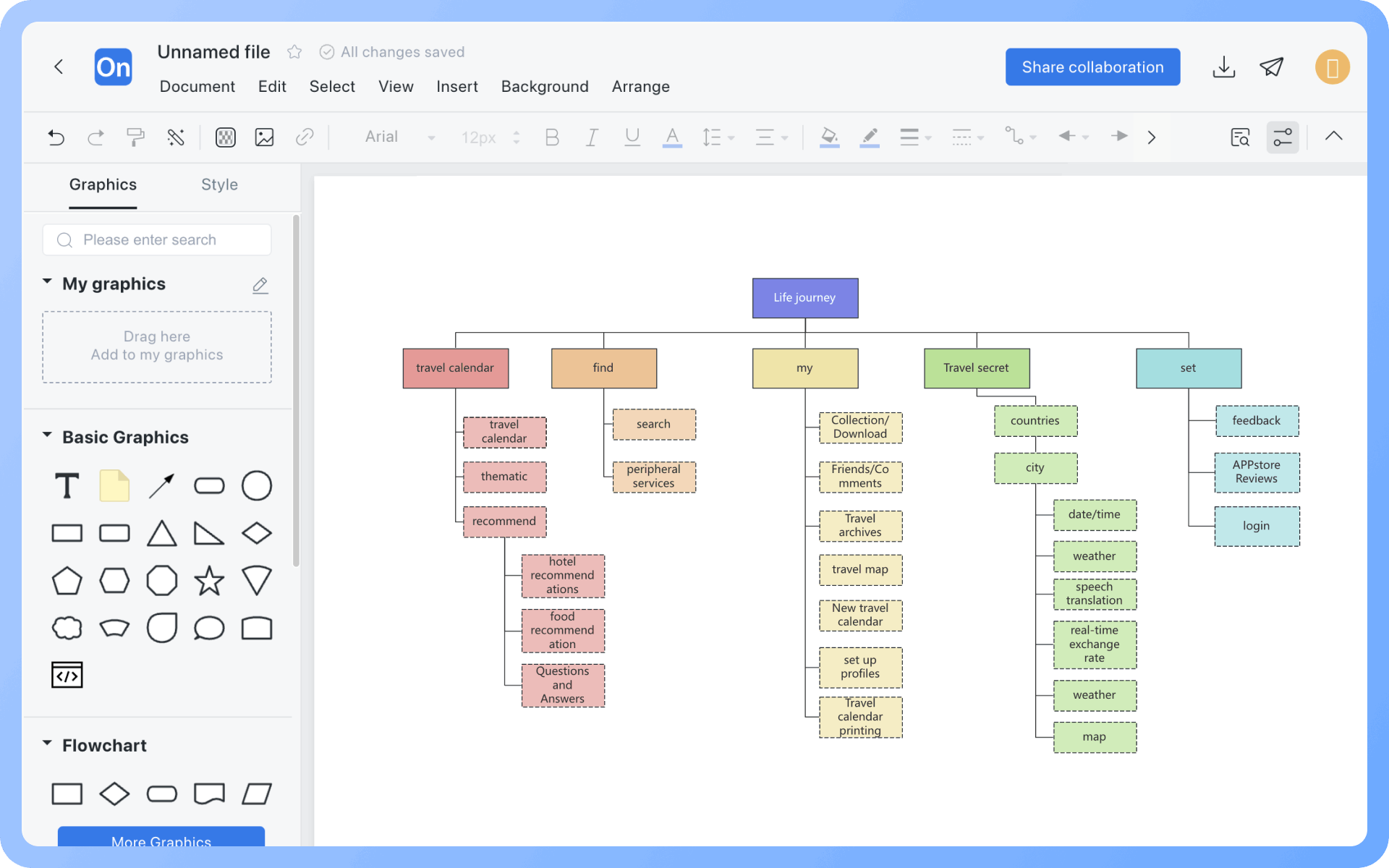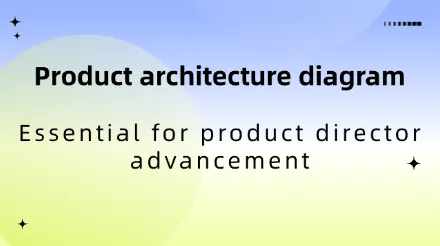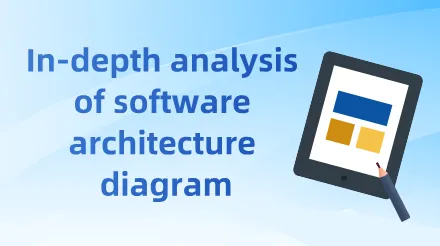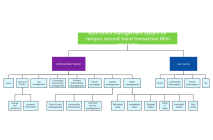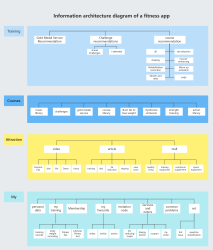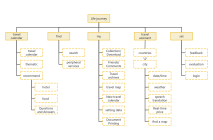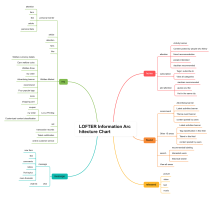Information Architecture Diagram Design Principles
Correspondence: Product goals correspond to user needs.
Similarity of functions: By classifying, similar functions are grouped together. The main framework of the product is based on large categories, while small categories serve as sub-frameworks to form the entire product framework.
Relationship between functions: Containment relationship--there is an upstream and downstream dependency relationship between functions, which can be a vertical information architecture; Parallel relationship--there is no association between two functions, so a horizontal information architecture can be considered.
Frequency of function usage: The higher the frequency of use, the more important the function is, and it should be placed in the most accessible place, with priority given to designing the architecture around core functions.
System scalability: As the product evolves from 0 to 1, and from 1 to N, product functions are continuously added and improved. This requires preparing for expansion when designing the information architecture and considering future scalability.

